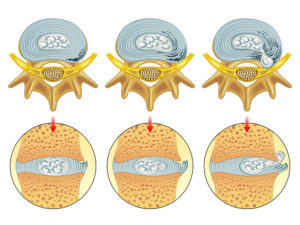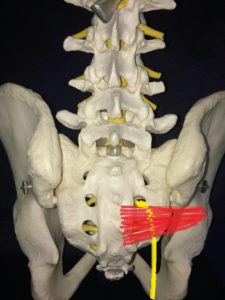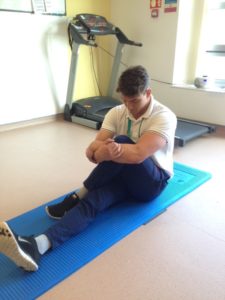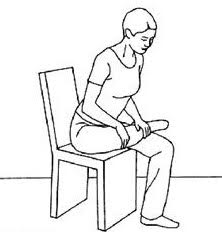This exact complaint is one I hear all the time, for people with sciatica. What concerns me most is not how common sciatica when sitting is, but how little good quality information there is out there for people suffering from a stiff, achy lower back and dull or shooting pains in their leg after they’ve been sitting for any period of time.
Aims of this post:
- To explain why sciatica is so common in people who sit for long periods of time
- To explain exactly what you can do to fix sciatica when sitting
Before we dive in, please be aware that we are part of the Amazon Affiliate programme. This page may contain Amazon affiliate links, so if you choose to purchase a product for your sciatica that we recommend through a link on this page, we will receive a small commission at no extra cost to you. This helps us keep Overcome Sciatica alive! Thank you for your support. Please be assured that we only ever recommend products that we truly believe can help.
Why Do We Get Sciatica When Sitting?
Have you ever had nagging leg pain that leaves you struggling to find a position of comfort when sitting?
There’s no doubt that this is a truly common problem. Sciatica when sitting affects many people, especially those suffering from a disc bulge or prolapse.
What makes it worse is that a lot of office workers end up with disc problems – and these are the people that sit all day long!
I find people are told by their friends and family, or even worse – doctors, that this is just the way it is, that it’s all due to their age and they will just have to put up with it.
Again – most of the time these people are being persuaded NOT to look for a solution to their sciatica when sitting, which can sometimes be easily fixed!
Below is an explanation for why people develop sciatica when sitting for any length of time. Read on past the common reasons to find the advice that I give to my clients with this nagging problem.
Top Reasons for Sciatica When Sitting
#1 – A disc bulge in the lower back
Your intervertebral discs act as a cushioning between the vertebrae (bones) in your spine.
They help to lubricate movement, and are formed by tough outer fibres which protect a soft centre.
When some of these tough outer fibres are damaged or affected by repetitive stress, the inner centre can “bulge” towards the problematic area. This causes a “disc bulge” which can press on the spinal nerve roots and give you sciatica.

Now, if the disc bulge is situated towards the rear of the disc, any pressure on the front part of the disc is likely to make the bulge at the rear worse.
When we sit, we are effectively putting more pressure on the front of our discs which is usually fine; but when we have some degree of damage to the outer fibres of a disc, it can cause the bulge to be pushed into a position where it might touch a nerve root.
This contact of the nerve root can cause sciatica. Watch the video below for a further explanation:
You can read an explanation of this in more detail HERE.
#2 – Sitting for too much of the day
Human beings are not made to sit for a long time, period. If you look at how we have evolved, as the technological age has developed and things like computers and mobile phones make our lives a lot easier, this occurs at the expense of our physical activity.
Where once upon a time you would have to walk from your house to the post office to send a letter, we now opt to send emails from the comfort of our sofa.
Sitting for long periods of time will change the length of certain muscles around your back and in your legs, shortening some (which get tight) and lengthening others (which get weak).
For a great stretching programme to PREVENT this, click HERE.
The effect this has is to alter the way these muscles pull on your back, which can sometimes lead to back pain and sciatica when sitting and associated stiffness.
Ask yourself, are you sat for over 1 hour at a time on multiple occasions throughout the day? If you can change this, you might feel a huge benefit.
For more advice on how to improve symptoms of back pain and sciatica while at work, click HERE.
#3 – Piriformis Syndrome
There is a muscle that lays deep within our buttock called the “Piriformis”.
This muscle is usually not problematic. However, in 10% of people, the sciatic nerve runs THROUGH the piriformis, not over it.
In those people, if the piriformis muscle gets tight, it can pinch on the sciatic nerve, causing sciatica.
This piriformis tightness is often made worse by – you guessed it – sitting.
Click here to read more about piriformis syndrome and how to stop it.
You can also see my latest video on piriformis syndrome below:
#4 – Poor chair height or the sofa is too soft
Ever sat in one of those sofas that you completely sink into as soon as you sit down? Feels great at first right?
But not for long, as your back soon starts to feel the effects of being in a “flexed” forward position for an extended period of time, causing it to become painful.
Sitting for short periods in chairs like this shouldn’t be a problem, but if you’re watching 2 hours of TV in this position every night, it’s not surprising that your back is suffering, and consequently your sciatica is getting worse.
I have identified some excellent products to help with this kind of problem when you have an office job HERE.
#5 – Trying too hard to sit upright!
Sitting upright with a straight back at all times is the best posture, right?
Well, if you have a facet joint problem or spinal stenosis, this is WRONG!
A long time ago, we used to think that the “military” type postures were best for preventing pain and wear and tear…
Now we know this not to be true, and quite often trying to sit upright all the time can cause more damage than it prevents.
The reason why the bolt upright posture can cause you more sciatica when sitting if you have a facet joint problem is due to the very position you are trying so hard to maintain.
Sitting up right is a type of “extension”, meaning your joints are in a closed position.
If you have a dysfunction of your facet joints, or they have gone through some degree of wear and tear, trying to force yourself into an extended position is going to be VERY uncomfortable!
This is because extension forces the two bones closer together. If there is a nerve root nearby, you’re going to get sciatica along with the inevitable back pain from this position!
So what can we do about sciatica when sitting?
For a start, if you’re not sure, it’s always best to get a problem checked out.
If you are developing pain when sitting and aren’t sure of the cause, getting a doctor or physiotherapist to check your back will help to rule out any more serious causes and make a diagnosis in order to remedy the problem.
In the meantime, here are our tips for taking action to fix the problem yourself:
The exercises provided on this page for informational purposes only and are not designed to be a ‘prescription’ of any kind. Be sure to check with your healthcare provider before you begin any new exercise programme.
Set a phone alarm for every 30 minutes
When you plan to sit for a while, set an alarm – each time the alarm goes off, stand up, stretch and change position.
Place a pillow behind your lower back
To facilitate a normal ‘C’ shape at the base of your spine, place a pillow in the natural arch of your lower back to protect your discs.
Alternatively you can buy support pillows especially for this purpose. You can have a look at some of my top rated back pain and sciatica products HERE.
If it hurts when you sit upright, allow yourself to slouch for a bit.
If you are finding that sitting bolt upright is making your sciatica worse, allow yourself to slouch!
Seriously, it won’t hurt you or your back.
The key here is just not staying in one position for too long – a little bit of slouching never hurt anyone!
If it hurts to slouch, allow yourself to sit more upright for a bit!
Equally, if slouching is aggravating your problem (which will probably be the case if you have a disc bulge) then try to sit more upright.
Again, don’t stay in this one position for too long!
Stretch the muscles in your legs
If you think you have a disc problem, try this set of exercises HERE.
Try this stretch in sitting – on your NON-PAINFUL side
This is a funny trick that can work really well for people with piriformis syndrome.
When stretches for the painful leg hurt too much, you can improve the mobility of your sciatic nerve by stretching the non-painful side.
Sitting in a chair, cross your non-painful leg over your painful leg as shown.
Then, lean forward as far as is comfortable. You should feel a stretch in the non-painful buttock. Hold for 30 seconds, repeating 5 times over.
Summary
I hope you have found this information useful and can put it to good use when learning how to get rid of sciatica!
If you found this article interesting, please consider sharing it with someone who is also suffering from back pain or sciatica, or wondering what to do for their back pain when sitting.
As always, thanks for reading.
Are You Looking for RAPID Relief from Sciatica?
My good friend, colleague and fellow international sciatica expert, Dean Volk, has a brand new sciatica relief video course available – and I’m delighted to be an official sponsor!
Check out Dean Volk’s “Kicking Sciatica OUT of the Butt!” Online Pain Relief Course Here!
I can proudly recommend Dean and his course for sciatica sufferers – because I’ve seen his incredible results first-hand. You can check out his course (and get lifetime access to the videos and bonus content) by clicking HERE.
The information on Overcome Sciatica should never be used as a substitute for medical advice from a doctor. Never put into action any tips or techniques from Overcome Sciatica without checking with your doctor first. Please see full terms of use here.








